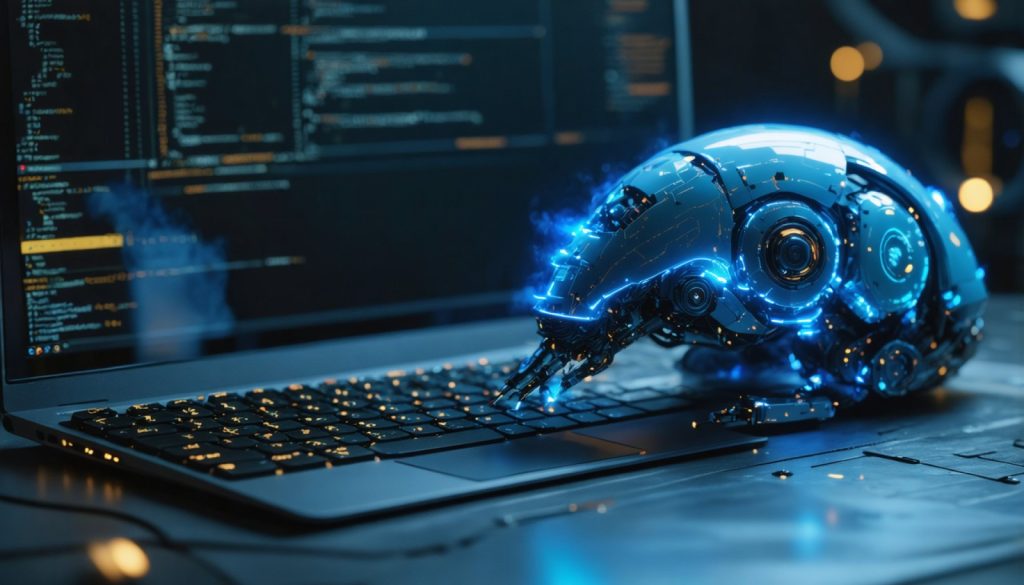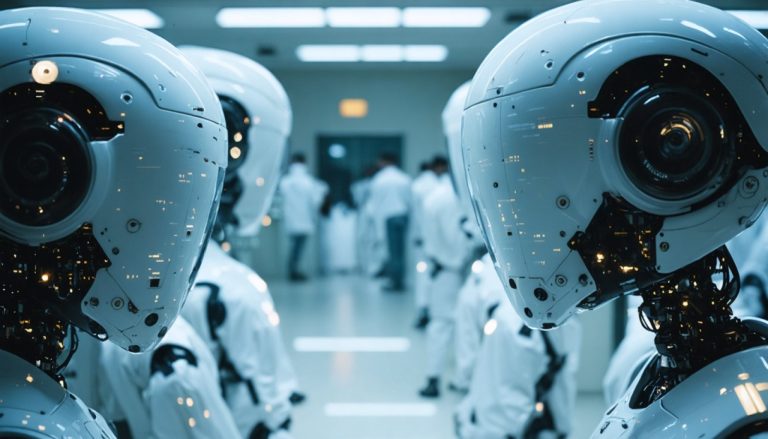
- AI is transforming software development by efficiently generating code, reshaping the coding landscape.
- Visionaries like Andrej Karpathy emphasize the rise of “vibe coding,” where intuitive prompts guide AI in coding.
- Riley Brown champions creative coding through his platform, Vibe Code, promoting AI’s role in redefining coding.
- Tom Preston-Werner highlights the necessity of automation as a tool for innovation in collaborative coding environments.
- Large Language Models (LLMs) are democratizing advanced technologies by empowering individuals directly.
- AI-driven creation is becoming integral, suggesting a shift in focus from traditional coding to learning AI interaction.
- The future of technology hinges on embracing AI’s potential, with creative adaptation being key to success.
Dark clouds of obsolescence gather over traditional coding as machine intelligence rapidly takes the reins. As AI systems prove adept at generating code faster and more efficiently than human hands, an unstoppable force is reshaping the landscape of software development. Companies are boasting about the growing chunks of their codebases now created by algorithms, and it’s impossible to ignore the seismic shifts beneath our feet.
Amidst this transformation, a group of visionary trailblazers are pushing the horizons, not merely participating in this tech evolution but scripting its narrative. Let’s venture into their world, where the vivid lines between programmer and prompter blur, and a new chapter unfolds.
Consider Andrej Karpathy, whose voice echoes with profound insight. Once a stalwart at OpenAI and Tesla, and now leading Eureka Labs, Karpathy is revered for his sagacity. He proclaims that “English is the hottest new programming language.” This bold assertion encapsulates the phenomenon of “vibe coding,” where setting intuitive prompts guides AI to craft the underlying structures that fuel our digital future. Karpathy’s journey from training AI to empowering students with nascent AI frameworks illustrates his commitment to democratizing technology.
Another name resonating in the tech corridors is Riley Brown. Known for energizing audiences on YouTube and pioneering the term “vibe coding,” Brown founded the platform Vibe Code, empowering developers to explore creative coding paths. By heralding the end of manual coding, he challenges the conventional, honoring the creative synthesis AI brings to programming. Brown stands at the intersection of creativity and code, redefining what it means to be a coder in the Age of Intuition.
Then there’s Tom Preston-Werner, a luminary in the world of open-source, whose co-creation of GitHub revolutionized collaborative coding. Like an artist refining his masterpiece, Preston-Werner developed tools that made complex websites attainable. In his eyes, the choice is stark: create automation or be consumed by it. His work stands as a beacon for developers navigating the surging tides of automation.
These innovators illuminate the path ahead, their insights dissected by thinkers like Nathaniel Whittemore on platforms like AI Daily Brief. Karpathy, articulating through papers like “Power to the People,” speaks passionately about the democratization of transformative technologies by Large Language Models (LLMs). He draws a sharp contrast between these tools and historical innovations trickling from elite spheres to the masses. LLMs reverse this flow, bringing empowerment directly into the hands of the many, while corporations and governments wrestle in their wake.
As we stand on the cusp of 2025, the sound of typing gives way to the soft hum of AI-driven creation. Automation advances, not as an ominous specter, but as an enabler for those willing to embrace its potential. These pioneers underline a simple truth: in a world where anyone can command vast computational power with a few words, it’s not just about learning to code—it’s about learning to speak the language of machines.
In the coming years, our approach to technology will define our path. Will we adapt, creating with AI as our brush? Or watch as the world is painted by others? As we embrace this new reality, let us remember the call to action from these visionaries. The dawn of AI-written code is here, and it brings with it a world full of possibilities.
The Future of Coding: Embrace AI or Get Left Behind
Introduction
The landscape of software development is undergoing a rapid transformation as artificial intelligence (AI) begins to outperform traditional coding. Innovators like Andrej Karpathy, Riley Brown, and Tom Preston-Werner inspire a new era where AI-led development is not just feasible but essential. With AI automating many facets of coding, understanding the implications for the future of software development is crucial.
How AI is Changing Software Development
1. Automation and Speed: Companies are increasingly integrating AI tools into their development processes, significantly reducing the time to write and deploy code. AI algorithms can write repetitive code much faster than humans, allowing developers to focus on more creative and strategic tasks.
2. “Vibe Coding”: Coined by Riley Brown, vibe coding emphasizes using intuitive prompts in plain English to instruct AI systems, making programming more accessible and less about syntax.
3. Open-Source and Collaboration: Platforms like GitHub, co-founded by Tom Preston-Werner, facilitate AI-powered collaborative coding, enabling developers worldwide to contribute and refine algorithms more efficiently.
Real-World Use Cases
– Rapid Prototyping: AI tools can quickly generate prototypes, accelerating the development and iteration cycles in tech companies.
– Personalized Software Solutions: By leveraging natural language processing capabilities, developers can create custom software that caters to individual user needs and preferences.
Industry Trends and Predictions
– Increased Adoption of AI Tools: More companies will adopt AI-driven tools like Copilot and GPT-4 to augment their development teams, resulting in a hybrid approach to coding by 2025.
– Democratization of Coding: Andrej Karpathy’s vision for democratizing technology suggests that as AI becomes more intuitive, individuals with no formal coding background can enter the development space using AI-enabled platforms.
Features, Specs & Pricing
– GPT-4 & Copilot: These models, used for assisting in code generation, offer subscription-based pricing, making them accessible for both individuals and enterprises. The tools integrate into popular IDEs, supporting numerous programming languages and frameworks.
Pros & Cons Overview
Pros:
– Saves time by automating mundane coding tasks.
– Lowers the barrier to entry for newcomers to programming.
– Facilitates innovative solutions through AI-generated code.
Cons:
– Risk of over-reliance on AI-generated code which might lack human creativity.
– Potential security vulnerabilities if AI-generated code isn’t carefully reviewed.
Security & Sustainability
– Code Review & Audits: Regular code reviews and audits ensure AI-generated code meets security standards, reduces bugs, and maintains sustainability in the development lifecycle.
Conclusion and Actionable Tips
As AI continues to redefine coding, developers must adapt by integrating these tools into their workflows. Here are a few quick tips:
– Learn AI Language Models: Understand how to use platforms like GPT-4 to complement your coding skills.
– Stay Updated: Follow industry leaders like Andrej Karpathy on platforms like Twitter to remain informed about emerging tools and trends.
– Experiment and Iterate: Adopt a mindset of experimentation, integrating AI tools gradually into your workflow to see what works best.
Embracing AI in software development not only enhances productivity but opens the door to a new realm of possibilities. The key to success lies in our ability to adapt and speak the language of AI.
For further insights on AI in coding, visit OpenAI and GitHub.



